2001: a space odyssey
 On a young planet called Earth, an alien intelligence – in the form of a large black monolith – tests the intelligence of a primitive race of primates. It also influences their development into a more ambitious and potentially more dangerous species. The monolith vanishes, having completed its task.
On a young planet called Earth, an alien intelligence – in the form of a large black monolith – tests the intelligence of a primitive race of primates. It also influences their development into a more ambitious and potentially more dangerous species. The monolith vanishes, having completed its task.
Millennia later, a primitive race of primates living on the planet Earth has developed the technology necessary to make short range space travel commonplace, and has discovered another monolith buried under the surface of Earth’s moon. Faced with the first solid evidence of extraterrestrial life, humankind launches a mission to Jupiter, the planet toward which the newly discovered monolith transmitted a brief signal. Astronauts Dave Bowman and Frank Poole pilot the spaceship Discovery, carrying a cargo of three trained scientists in cryogenically-induced hibernation, though Bowman and Poole – along with most of the rest of the human race – have not been told about the monolith on the moon, and their fellow travelers were frozen prior to the mission to avoid that information leaking out. The Discovery’s onboard computer, the artificially intelligent HAL 9000, begins to show signs of unreliable decision-making, and when Bowman and Poole take steps to shut HAL down, it kills Poole during a spacewalk and tries to shut Bowman out of the ship when he goes to retrieve his fallen comrade. HAL also deactivates the three frozen scientists’ life support units, killing them as well. Bowman manages to get back aboard Discovery and shuts down HAL’s higher logic centers. But when Discovery finally reaches Jupiter as planned – with only one surviving crewmember – no amount of astronaut training, nor even the sum total of human experience, has prepared David Bowman for what he will find there, for the monolith has returned.
screenplay by Stanley Kubrick and Arthur C. Clarke
directed by Stanley Kubrick
music byCast: Keir Dullea (David Bowman), Gary Lockwood (Frank Poole), William Sylvester (Heywood Floyd), Douglas Rain (HAL 9000), Daniel Richter (Moon-Watcher), Leonard Rossiter (Dr. Andrei Smyslov), Margaret Tyzack (Elena), Robert Beatty (Dr. Ralph Halvorsen), Sean Sullivan (Dr. Bill Michaels), Frank Miller (Mission Controller), Bill Weston (Astronaut), Edward Bishop (Aries-1B Lunar Shuttle Captain), Glenn Beck (Astronaut), Alan Gifford (Poole’s Father), Ann Gillis (Poole’s Mother), Edwina Carroll (Aries-1B Stewardess), Penny Brahms (Aries-1B Stewardess), Heather Downham (Aries-1B Stewardess), Mike Lovell (Astronaut), John Ashley (Ape), Peter Delmar (Ape), David Hines (Ape), Darryl Faes (Ape), Timmy Bell (Ape), Terry Duggan (Ape), Tony Jackson (Ape), Joe Refalo (Ape), David Charkham (Ape), David Fleetwood (Ape), John Jordan (Ape), Andy Wallace (Ape), Simon Davis (Ape), Danny Grover (Ape), Scott Mackee (Ape), Bob Wilyman (Ape), Jonathan Daw (Ape), Brian Hawley (Ape), Laurence Marchant (Ape), Richard Wood (Ape), Kenneth Kendall (BBC Newsreader)
Notes: Actor Ed Bishop lent his voice to many genre animated series, including Gerry Anderson’s Captain Scarlet and the Mysterons and an episode of the animated Star Trek series. He later appeared in the flesh in Anderson’s cult classic ’70s live-action series UFO as Commander Ed Straker, and appeared in the Big Finish Doctor Who Unbound audio story Full Fathom Five. Kenneth Kendall was a BBC newsreader in real life – the first person to do so on camera in the BBC’s history, in 1955. He parlayed that unique historical footnote into appearances – more or less as himself in his familiar job – on The Morecambe & Wise Show, Adam Adamant Lives! and numerous British-made B-movies. The only actors to appear in both this movie and its 1984 sequel are Keir Dullea and Douglas Rain. Director Stanley Kubrick had the elaborate sets built for 2001 destroyed immediately after production to make sure that they wouldn’t be reused in later films (such reuse being a common practice that he felt would cheapen 2001).
LogBook entry and review by Earl Green

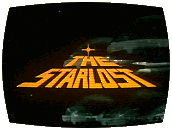
 Ellison himself. Never afraid to rub the right people the wrong way, Ellison had a time-honored tradition of removing his name from scripts that he felt had been tinkered with to the point of unrecognizability by the producers of shows he sold stories to, replacing his credit with the pseudonym “Cordwainer Bird,” a signal to his fans that his work had been altered. He had threatened to use this pseudonym on the famous Star Trek episode
Ellison himself. Never afraid to rub the right people the wrong way, Ellison had a time-honored tradition of removing his name from scripts that he felt had been tinkered with to the point of unrecognizability by the producers of shows he sold stories to, replacing his credit with the pseudonym “Cordwainer Bird,” a signal to his fans that his work had been altered. He had threatened to use this pseudonym on the famous Star Trek episode 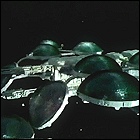 science fiction television show. While taking place aboard a vast spaceship, The Starlost allowed for location filming by equipping that ship with enclosed ecosystem domes, each containing a different kind of terrain and society. Any location could be used, and any issue explored, within The Starlost’s format. Three main characters would escape from a dome whose enclosed society was Amish, discovering the innards of a ship brimming with technology far beyond their comprehension. Making their way to the bridge, they find that the ship is out of control and off course, barreling toward a star in its path. None of the original flight crew, or their descendants, remain alive to pilot the Ark, which contains representative cross-sections of Earth flora and fauna – and diverse human societies, with all of their foibles intact. The hunt is on to visit the other domes in search of someone who can steer the ship away from imminent disaster. This way, even un-redressed modern-day settings could be used: just another snapshot of society, frozen in amber in one of the Ark’s domes – a perfect recipe for affordable, weekly, issue-driven science fiction.
science fiction television show. While taking place aboard a vast spaceship, The Starlost allowed for location filming by equipping that ship with enclosed ecosystem domes, each containing a different kind of terrain and society. Any location could be used, and any issue explored, within The Starlost’s format. Three main characters would escape from a dome whose enclosed society was Amish, discovering the innards of a ship brimming with technology far beyond their comprehension. Making their way to the bridge, they find that the ship is out of control and off course, barreling toward a star in its path. None of the original flight crew, or their descendants, remain alive to pilot the Ark, which contains representative cross-sections of Earth flora and fauna – and diverse human societies, with all of their foibles intact. The hunt is on to visit the other domes in search of someone who can steer the ship away from imminent disaster. This way, even un-redressed modern-day settings could be used: just another snapshot of society, frozen in amber in one of the Ark’s domes – a perfect recipe for affordable, weekly, issue-driven science fiction.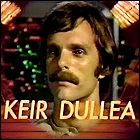 make the show affordable. Canadian writers would be hired to execute Ellison’s vision, with Ellison and his science advisor – respected SF author Ben Bova – steering things from their offices in Hollywood. Famed special effects innovator Douglas Trumbull, who had wowed the movie world with
make the show affordable. Canadian writers would be hired to execute Ellison’s vision, with Ellison and his science advisor – respected SF author Ben Bova – steering things from their offices in Hollywood. Famed special effects innovator Douglas Trumbull, who had wowed the movie world with 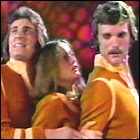 Trumbull’s best efforts, his patented system to superimpose live actors over detailed miniature sets failed to work convincingly in the medium of video. (Infamously, the “pitch reel” for The Starlost highlighted Trumbull’s technique to greater effect than the series itself ever did.) Rewrites were ordered to Harlan Ellison’s pilot script, in some cases quite drastic, and “Cordwainer Bird” swooped in once more; Ellison was disowning his creation before it had even gotten off the ground, and triggered an exit clause in his contract. Ben Bova had no such clause, and was trapped on the series, offering advice to a team of Canadian writers who ignored his scientific wisdom as often as they heeded it. (Bova would later fictionalize this experience in his novel “The Starcrossed,” while Ellison would rage about his singular shot at creating a television series in the introduction he penned for a novelization of The Starlost’s pilot script, “
Trumbull’s best efforts, his patented system to superimpose live actors over detailed miniature sets failed to work convincingly in the medium of video. (Infamously, the “pitch reel” for The Starlost highlighted Trumbull’s technique to greater effect than the series itself ever did.) Rewrites were ordered to Harlan Ellison’s pilot script, in some cases quite drastic, and “Cordwainer Bird” swooped in once more; Ellison was disowning his creation before it had even gotten off the ground, and triggered an exit clause in his contract. Ben Bova had no such clause, and was trapped on the series, offering advice to a team of Canadian writers who ignored his scientific wisdom as often as they heeded it. (Bova would later fictionalize this experience in his novel “The Starcrossed,” while Ellison would rage about his singular shot at creating a television series in the introduction he penned for a novelization of The Starlost’s pilot script, “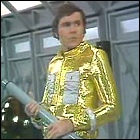 shows of the time, most American-made drama series were made on film, and the use of video was perceived as “cheap,” or a necessary evil used by programs requiring a very quick production turnaround, such as newscasts and soap operas. The special effects of The Starlost had been reduced to technology that the Canadian studio could handle, abandoning Trumbull’s sophisticated two-camera system, frquently resulting in effects shots looking no more convincing than a nightly weather forecast. Despite guest appearances from past and future genre heavyweights such as John Colicos, Barry Morse and Walter Koenig, among other faces familiar to Canadian TV viewers, The Starlost couldn’t be saved; the show was cancelled after only 16 episodes.
shows of the time, most American-made drama series were made on film, and the use of video was perceived as “cheap,” or a necessary evil used by programs requiring a very quick production turnaround, such as newscasts and soap operas. The special effects of The Starlost had been reduced to technology that the Canadian studio could handle, abandoning Trumbull’s sophisticated two-camera system, frquently resulting in effects shots looking no more convincing than a nightly weather forecast. Despite guest appearances from past and future genre heavyweights such as John Colicos, Barry Morse and Walter Koenig, among other faces familiar to Canadian TV viewers, The Starlost couldn’t be saved; the show was cancelled after only 16 episodes.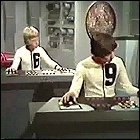 the Ark as “8,000 miles in character” (and then describing the star with which it will eventually collide as being “5,000 miles in character” – or, in other words, smaller than the Ark – presumably it’s a dwarf star); these “movies” went out of circulation as quickly as they appeared, and represented the only time The Starlost was repeated after its original 1973/74 broadcasts. Having vanished into obscurity, The Starlost gained a reputation – usually by word-of-mouth, and frequently repeated by those who had never actually seen it – as the worst science fiction series in the history of TV. Harlan Ellison, in convention appearances, essays and book introductions, did nothing to attempt to salvage the show’s reputation; if Ellison was saying this about his own show, then surely it must have been true. A 21st century DVD release gave The Starlost its first airing since the ’80s, allowing curious viewers to judge its merits – or lack thereof – for themselves.
the Ark as “8,000 miles in character” (and then describing the star with which it will eventually collide as being “5,000 miles in character” – or, in other words, smaller than the Ark – presumably it’s a dwarf star); these “movies” went out of circulation as quickly as they appeared, and represented the only time The Starlost was repeated after its original 1973/74 broadcasts. Having vanished into obscurity, The Starlost gained a reputation – usually by word-of-mouth, and frequently repeated by those who had never actually seen it – as the worst science fiction series in the history of TV. Harlan Ellison, in convention appearances, essays and book introductions, did nothing to attempt to salvage the show’s reputation; if Ellison was saying this about his own show, then surely it must have been true. A 21st century DVD release gave The Starlost its first airing since the ’80s, allowing curious viewers to judge its merits – or lack thereof – for themselves.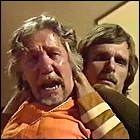 If nothing else, The Starlost represents a brave attempt to make something out of nothing – a perfect illustration of the law of diminishing returns. The series concept remains viable, though it’s doubtful that Ellison will ever overcome his distaste for Hollywood enough to allow it to be revisited. A recent comic adaptation claimed to hew more closely to Ellison’s original intentions for the pilot, but in reality didn’t change much aside from the “production values” thanks to a huge set costing as much as a small one in the realm of printed artwork. The Starlost is still one of the smartest ideas anyone’s had for a genre TV series – if anyone can ever forgive it for the cheap execution foisted upon its first attempt.
If nothing else, The Starlost represents a brave attempt to make something out of nothing – a perfect illustration of the law of diminishing returns. The series concept remains viable, though it’s doubtful that Ellison will ever overcome his distaste for Hollywood enough to allow it to be revisited. A recent comic adaptation claimed to hew more closely to Ellison’s original intentions for the pilot, but in reality didn’t change much aside from the “production values” thanks to a huge set costing as much as a small one in the realm of printed artwork. The Starlost is still one of the smartest ideas anyone’s had for a genre TV series – if anyone can ever forgive it for the cheap execution foisted upon its first attempt.
 Dr. Heywood Floyd, the mission director of the Discovery mission, resigned after the ambiguous conclusion of that flight, a scapegoat for the U.S. government and the press to blame for the disastrous outcome. The Soviet Union offers Floyd a berth on a Jupiter-bound Soviet mission which will get to the derelict Discovery long before an American follow-up mission can be launched. Despite a precarious political standoff taking place between the two superpowers, Floyd talks the U.S. government into allowing him to go on the Soviet flight along with two other Americans – Walter Curnow, the Discovery’s original designer, and Dr. Chandra, the eccentric computer genius who created the HAL 9000 computer.
Dr. Heywood Floyd, the mission director of the Discovery mission, resigned after the ambiguous conclusion of that flight, a scapegoat for the U.S. government and the press to blame for the disastrous outcome. The Soviet Union offers Floyd a berth on a Jupiter-bound Soviet mission which will get to the derelict Discovery long before an American follow-up mission can be launched. Despite a precarious political standoff taking place between the two superpowers, Floyd talks the U.S. government into allowing him to go on the Soviet flight along with two other Americans – Walter Curnow, the Discovery’s original designer, and Dr. Chandra, the eccentric computer genius who created the HAL 9000 computer.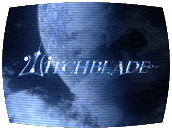
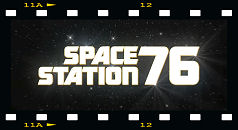 Jessica Marlowe arrives at space station Omega 76 to begin a tour of duty as the station’s second-in-command under uptight Captain Glenn, whose previous second-in-command left under mysterious (and much-gossiped-about) circumstances. She meets the station’s other personnel and spouses in rapid succession, including Ted and his wife Misty, the latter of whom has an oddly distant relationship with both her husband and their daughter, and Steve and Donna, both eager to move on to a better posting than Omega 76. Jessica, unable to have children of her own, quickly befriends Ted and his daughter, as Misty grows jealous of her presence. Glenn continually questions Jessica’s fitness for duty and her every suggestion, until she realizes that his relationship with her predecessor was more than just professional. She finds that her feelings for one of her new crewmates is entering that territory as well.
Jessica Marlowe arrives at space station Omega 76 to begin a tour of duty as the station’s second-in-command under uptight Captain Glenn, whose previous second-in-command left under mysterious (and much-gossiped-about) circumstances. She meets the station’s other personnel and spouses in rapid succession, including Ted and his wife Misty, the latter of whom has an oddly distant relationship with both her husband and their daughter, and Steve and Donna, both eager to move on to a better posting than Omega 76. Jessica, unable to have children of her own, quickly befriends Ted and his daughter, as Misty grows jealous of her presence. Glenn continually questions Jessica’s fitness for duty and her every suggestion, until she realizes that his relationship with her predecessor was more than just professional. She finds that her feelings for one of her new crewmates is entering that territory as well.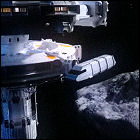 Victor Togunde (James), Jonny Jay (Trucker), Mike Stoyanov (Dr. Bot), Susan Currie (Steve’s Mom), Hart Keathley (Donna’s Baby), Anna Sophie Burglund (Star Angel), Sam Pancake (Saul), Katherine Ann McGregor (Janice), Julia E.L. Wood (Susan), Phillip Agresta (Crew Member), Kevin Beltz (Crew Member), Billy Brooks (Crew Member), Dan Burks (Crew Member), Melodi Hallenbeck (Crew Member), Marianne Heath (Crew Member), Matthew Horn (Crew Member), Shannon Jones (Crew Member), Alexander Koehne (Crew Member), Ilana Marks (Crew Member), Ken Koyasu Park (Crew Member), Jack Plotnick (Crew Member), Rachel Ward (Crew Member), Garrett Watts (Crew Member)
Victor Togunde (James), Jonny Jay (Trucker), Mike Stoyanov (Dr. Bot), Susan Currie (Steve’s Mom), Hart Keathley (Donna’s Baby), Anna Sophie Burglund (Star Angel), Sam Pancake (Saul), Katherine Ann McGregor (Janice), Julia E.L. Wood (Susan), Phillip Agresta (Crew Member), Kevin Beltz (Crew Member), Billy Brooks (Crew Member), Dan Burks (Crew Member), Melodi Hallenbeck (Crew Member), Marianne Heath (Crew Member), Matthew Horn (Crew Member), Shannon Jones (Crew Member), Alexander Koehne (Crew Member), Ilana Marks (Crew Member), Ken Koyasu Park (Crew Member), Jack Plotnick (Crew Member), Rachel Ward (Crew Member), Garrett Watts (Crew Member)